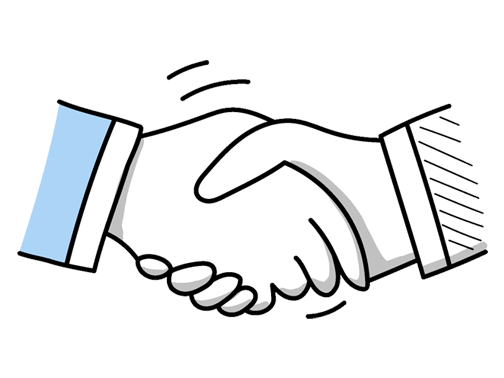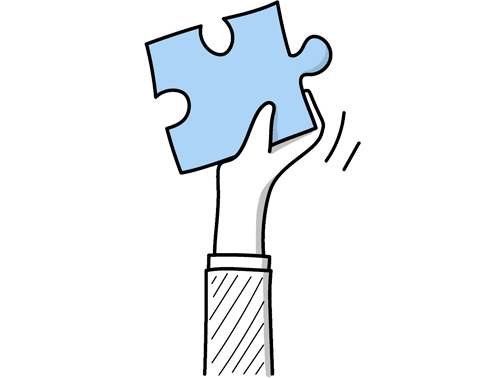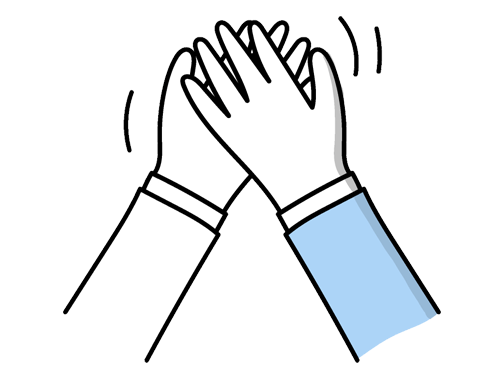Executive Driver Interview Questions (2025 Guide)
Find out common Executive Driver questions, how to answer, and tips for your next job interview
Practice Interviews Online - Identify your strengths and weakness in a realistic Executive Driver mock interview, under 10 minutes
Practice Now »Executive Driver Interview Questions
This interview question is designed to assess your awareness and commitment to safety, which is critical for an executive driver responsible for high-profile clients. You need to explain specific precautions you take, like obeying traffic laws, maintaining vehicle condition, and staying alert to road conditions.
Example: I always stay fully focused on the road, avoiding distractions like phones or loud music. Before setting off, I check the vehicle to ensure everything is in good condition. I adapt my driving to weather and traffic, keeping a safe distance from other cars. For example, on rainy days, I slow down and increase following distance to maintain control and safety throughout the journey.
What they want to know is if you understand and follow local traffic laws to ensure safety and legal compliance while driving. You should say that you know the UK traffic rules well, consistently follow speed limits and road signs, and keep your licenses and documents up to date.
Example: Yes, I’m well-versed in UK traffic laws and always prioritise safety, whether it’s adhering to speed limits or understanding right-of-way rules. I make it a point to stay updated on any changes, and routinely check the vehicle to ensure everything meets legal standards. I understand the trust placed in me to transport executives safely and responsibly, and I take that responsibility very seriously.
This question is designed to assess your ability to drive safely and effectively under challenging conditions while maintaining professionalism and quick decision-making. In your answer, focus on describing specific situations where you navigated safely through bad weather or hazards, and explain how you stayed calm and adapted routes to ensure timely, secure arrivals.
Example: In my previous role, I often drove through heavy rain and icy roads, always prioritising smooth, controlled handling to keep passengers safe. Once, when a major route was unexpectedly closed, I quickly found an alternate path, avoiding delays. Staying composed in these situations allows me to make clear decisions and ensure a comfortable journey, no matter the conditions.
This interview question is designed to assess your ability to stay calm, make quick decisions, and prioritize safety under pressure. In your answer, focus on describing the situation clearly, explaining the actions you took to ensure safety, and highlighting the successful outcome.
Example: During a routine journey, a pedestrian suddenly stepped onto the road. I remained calm, smoothly applied the brakes, and steered safely to avoid any danger, while alerting the passenger. Afterwards, I checked the surroundings to ensure no further risks before continuing. Staying composed and responsive in such moments is essential to ensure everyone’s safety.
This interview question gauges your flexibility and ability to stay organized under pressure, which are crucial for an executive driver. You need to say that you prioritize clear communication, keep a buffer in your schedule, and stay calm to adapt efficiently to any changes.
Example: I keep my day flexible by anticipating changes and staying in close contact with my client and their team. If a last-minute request comes up, I quickly reassess priorities and adjust routes to save time. For example, once a meeting moved unexpectedly, so I planned an alternative route that avoided traffic, ensuring my client arrived promptly without disruption. Staying calm and adaptable is key.
Hiring managers ask this to see if you prioritize both comfort and safety while driving, showing you can adapt and respond to passenger needs. You should say you attentively adjust settings for comfort, plan routes carefully to stay on time and safe, and calmly handle unexpected issues to ensure a smooth ride.
Example: To provide excellent service, I stay focused on the passenger’s comfort and preferences throughout the trip, adjusting the environment or route if needed. I prioritise safety and timeliness, ensuring a smooth journey without rushing. When unexpected delays arise, I communicate clearly and find alternatives to keep things running smoothly. For example, if there’s traffic, I calmly suggest a different route to save time and reduce stress.
Employers ask this to ensure you can meet the job’s demanding schedule and remain reliable during irregular hours. You need to express your willingness to work nights and weekends by sharing past experiences and explain how you manage your time to stay punctual and balance personal commitments effectively.
Example: Yes, I’m comfortable working outside the usual 9 to 5, including nights and weekends. In my previous role, I often adapted my schedule to meet urgent requests without compromising punctuality. I’ve found that clear planning helps me balance personal commitments alongside such demands, ensuring I’m always reliable and ready when needed.
Employers ask this to ensure you can handle the unpredictable and demanding nature of executive driving. You need to clearly say that you are flexible and prepared to travel both long distances and on short notice to meet the job's requirements.
Example: I’m comfortable with both long journeys and last-minute trips. In previous roles, I’ve often adapted my schedule to accommodate urgent travel requests, whether for early morning airport runs or out-of-town meetings. I understand that flexibility is key in this role and am prepared to ensure timely and safe travel whenever required.
Hiring managers ask this to see if you understand and follow the rules that keep everyone safe and the company protected. You need to explain how you consistently follow safety guidelines, perform regular vehicle checks, and prioritize protocols to ensure compliance every day.
Example: I make it a priority to stay well-informed about all company guidelines and updates, which helps me avoid any slip-ups. For example, I regularly review safety protocols and ensure my vehicle is always checked before journeys. If I ever spot potential risks, I address them immediately. This approach not only keeps me aligned with company standards but also supports a safe, smooth experience for everyone involved.
Hiring managers ask this question to ensure you have the specific experience and professionalism needed for executive driving. You need to clearly state your relevant roles, emphasize your commitment to safety and punctuality, and highlight your discretion with confidential information.
Example: I’ve spent several years driving executives and high-profile clients, always prioritising safety and timeliness. Whether navigating busy London streets or long-distance trips, I maintain a calm, focused approach. I’m trusted to handle sensitive conversations and confidential information discreetly, ensuring a professional environment. For example, I’ve managed last-minute schedule changes smoothly without disrupting the client’s day.
Hiring managers ask this question to understand how you prioritize passenger well-being and demonstrate professionalism. You need to explain that you maintain a clean, climate-controlled vehicle, follow safe driving practices, and communicate politely to create a secure and welcoming environment.
Example: I always start by maintaining a calm, professional demeanor, making sure the vehicle is clean and well-prepared. I keep conversations light and respectful, paying attention to passengers’ needs without being intrusive. For example, adjusting the temperature or music to their preference helps create a relaxed atmosphere. Above all, I focus on smooth, safe driving and stay alert, so they feel secure from start to finish.
This interview question assesses your attention to detail and commitment to safety, which are crucial for an executive driver. You need to explain that you conduct daily vehicle inspections, keep detailed maintenance records, and maintain cleanliness to ensure the vehicle is always reliable and comfortable.
Example: I make it a point to check the vehicle regularly, from tyre pressure to fluid levels, so any issues are spotted early. Keeping a log of all services and repairs helps me track what’s been done and what’s due. I also keep the car spotless and promote a safe, comfortable ride, because when the vehicle feels reliable and clean, it builds confidence for everyone on board.
This question assesses your ability to anticipate challenges and optimize routes under time constraints. You need to explain that you use real-time traffic data, plan alternate routes, and account for client schedules to ensure punctuality.
Example: I usually start by checking the day’s schedule and traffic updates, using reliable navigation tools to find the quickest routes. I like to factor in possible delays, like roadworks or peak hours, so I can adjust if needed. For example, once I took an alternate route when there was unexpected congestion, and still got my passenger to a meeting on time without any stress.
This interview question checks your ability to protect passenger privacy and handle sensitive information responsibly. You need to explain how you keep details confidential, follow data protection laws like GDPR, and communicate professionally to reassure passengers about their privacy.
Example: I treat all passenger details with the utmost discretion, understanding that trust is key. I’m mindful of legal obligations and always keep conversations and information strictly private. For example, if a passenger shares travel plans, I never discuss them with anyone else. Maintaining professionalism means knowing when to listen, when to stay silent, and ensuring their privacy is respected at all times.
Employers ask this question to ensure you have strong local knowledge and can efficiently navigate key destinations for clients. You need to confidently mention your familiarity with major business districts like Canary Wharf and The City, key hotels such as The Ritz and The Savoy, and your experience driving to airports including Heathrow, Gatwick, and London City.
Example: Yes, I’m well-acquainted with the main business hubs like Canary Wharf and the City of London, as well as key hotels such as The Savoy and The Langham, which clients often prefer. I’m also familiar with the best routes to Heathrow, Gatwick, and London City Airport, ensuring smooth and timely journeys regardless of traffic or terminal changes. This helps provide a seamless experience for every trip.
Hiring managers want to see that you use your local knowledge proactively to ensure safety and efficiency. You need to describe a specific situation where knowing the area helped you avoid delays or hazards, showing your reliability and quick thinking.
Example: Certainly. While driving a client through central London during peak hours, I noticed a sudden traffic build-up ahead. Thanks to my familiarity with alternative routes, I quickly diverted through quieter side streets, avoiding delays caused by an unexpected road closure. This ensured the client arrived on time without added stress, demonstrating how knowing the area well can make a real difference.
What they want to understand is your dedication to exceptional service and your ability to anticipate and exceed passenger needs. You need to describe a specific instance where you took extra steps to ensure comfort, safety, or convenience, showing your commitment to going beyond basic responsibilities.
Example: Certainly. Once, a passenger had an urgent meeting and their phone died. I quickly located a nearby store, purchased a charger, and ensured their device was powered up before we continued. It wasn’t just about driving; it was about making sure they arrived prepared and stress-free. Moments like that define the role beyond just transport.
Interviewers ask this to see how you manage stress and maintain professionalism with challenging clients. You should say that you stay calm, listen carefully, communicate solutions clearly, and always remain polite while following company policies.
Example: When dealing with challenging passengers, I stay composed and listen carefully to their concerns, which helps calm the situation. I communicate clearly to understand their needs and find practical solutions on the spot. For example, if there’s a delay, I explain the reason calmly and suggest alternatives. Throughout, I maintain a professional attitude and follow company guidelines to ensure the journey remains safe and comfortable for everyone.
Interviewers ask this to see if you can stay calm and adaptable under pressure while keeping clients informed. You need to explain how you quickly adjust your route, communicate delays promptly to clients, and find alternative solutions to minimize impact.
Example: When delays or changes come up, I stay calm and quickly assess the situation. I keep the client informed, explaining any new timings and options clearly. For example, if traffic builds unexpectedly, I might find an alternate route or suggest adjusting the schedule slightly to keep things running smoothly. The key is staying flexible and communicating openly to ensure the client’s needs are met without added stress.
Employers ask this question to assess your honesty, responsibility, and commitment to safety on the road. You need to openly acknowledge any incidents, explain how you learned from them, and emphasize your overall strong safety record.
Example: I’ve maintained a clean driving record for most of my career, prioritising safety at all times. There was one minor incident a few years ago, where I misjudged a wet road, but I took full responsibility, reviewed my approach, and adjusted my driving habits accordingly. This experience reinforced my focus on caution and professionalism behind the wheel.
Employers ask this question to see how flexible and client-focused you are in managing unexpected changes. You need to explain a specific instance where you rearranged your schedule promptly to accommodate a client’s urgent request, showing your commitment to their convenience.
Example: During a busy week, a client’s meeting was unexpectedly moved earlier. I rearranged my day to ensure all other commitments stayed on track while being ready well ahead of time. This flexibility helped the client arrive without stress and reinforced my commitment to supporting their priorities seamlessly.
Interviewers ask this question to assess your confidence and versatility in handling the types of vehicles you'll be expected to drive, as well as your familiarity with their specific features. You need to say you are comfortable driving executive sedans like Jaguar or Mercedes-Benz, explain your knowledge of their advanced systems, and highlight your adaptability to various driving environments.
Example: I’m comfortable driving a wide range of vehicles, from luxury sedans to larger executive models. I’m familiar with the nuances of each, such as advanced safety systems or adaptive cruise control, which helps ensure smooth, confident handling. Whether navigating city traffic or longer motorway trips, I’m adaptable and focused on providing a safe, comfortable ride tailored to the needs of the passenger.
What they want to know is how well you understand the local roads and traffic to ensure efficient, timely driving. You should say you know major and alternate routes, understand peak traffic times, and can adapt plans quickly when delays happen.
Example: I have a strong grasp of the key routes around London and nearby areas, including quieter back roads that help avoid delays. I’m well aware of rush hour peaks and how traffic shifts during events or roadworks. This experience lets me adjust the route smoothly to keep on schedule, whether it’s a quick trip across town or longer journeys beyond the city.
Interviewers ask this to ensure you can navigate confidently without relying solely on GPS and stay proactive about traffic conditions. You should say that you memorize key routes and landmarks, regularly check local traffic news and official sources, and quickly adjust your plans when unexpected delays arise.
Example: I’m comfortable navigating without GPS by relying on my knowledge of local routes and reading road signs carefully. I also keep an eye on traffic reports through radio updates and use apps to check for any unexpected closures before setting off. If there’s a sudden change, I stay flexible and quickly adjust my route to ensure timely and smooth journeys.
Interviewers ask this question to see if you actively keep up with vital changes that impact safe and legal driving. You need to explain that you regularly check official sources like government websites, attend relevant training sessions, and apply any new rules or restrictions promptly to your driving routine.
Example: I keep myself informed by regularly checking official government websites and trusted transport news sources for any updates. I also attend refresher courses whenever possible to sharpen my skills and knowledge. Applying new rules on the road is a priority—I make sure to adjust my driving habits promptly to maintain the highest safety standards, which gives both me and my passengers peace of mind.
Ace your next Executive Driver interview with even more questions and answers
Common Interview Questions To Expect
The interviewer is looking for honesty, self-awareness, and a clear explanation of the reasons behind the career change. Possible answers could include seeking new challenges, better work-life balance, or a passion for the new industry.
Example: I decided to change career paths because I was looking for new challenges and opportunities to grow. I also wanted a better work-life balance and felt passionate about becoming an executive driver. It was a decision that I made after careful consideration and I am excited about the new direction my career is taking.
The interviewer is looking for examples of how you stay calm and focused under pressure, how you prioritize tasks, and how you communicate effectively in stressful situations.
Example: I handle pressure by staying organized and prioritizing tasks effectively. I remain calm and focused, making sure to communicate clearly with my team and clients during stressful situations. This helps me to navigate challenging situations and deliver results efficiently.
Candidates can answer by providing examples of times they successfully managed multiple responsibilities, demonstrating their organizational skills and ability to prioritize tasks. Interviewers are looking for evidence of multitasking abilities and time management skills.
Example: Yes, I have experience handling multiple responsibilities at once. For example, in my previous role as an executive driver, I was responsible for managing the schedule, coordinating logistics, and ensuring the safety of passengers all at the same time. I prioritize tasks based on urgency and importance to ensure everything runs smoothly.
The interviewer is looking for examples of how you have collaborated with others, communicated effectively, and contributed to team success. Be specific and highlight your teamwork skills and experiences.
Example: Sure! In my previous role as an executive driver, I worked closely with a team of security personnel to ensure the safety and security of our clients. We communicated effectively to coordinate schedules and routes, and I always made sure to contribute my driving expertise to help the team achieve our goals efficiently. Overall, my experience working in a team has taught me the importance of collaboration and communication in achieving success.
The interviewer is looking for insight into your personal drive and what inspires you to excel in your role as an Executive Driver. Be honest and specific in your response, highlighting your passion for the job.
Example: What motivates me as an Executive Driver is the opportunity to provide top-notch service to high-profile clients and ensure their safety and comfort. I take pride in my ability to navigate through challenging traffic situations and always arrive at destinations on time. Knowing that I play a crucial role in the success of my clients drives me to constantly improve and exceed expectations.
Company Research Tips
The company's official website is a goldmine of information. Look for details about the company's history, mission, vision, and values. Understand the services they offer and the markets they serve. For an Executive Driver role, it's important to know the company's locations and the nature of their business as it may give you an idea of the driving routes and schedules.
Tip: Pay special attention to the 'About Us', 'Our Team', and 'News' sections. These can provide valuable insights into the company culture and recent developments.
Social media platforms like LinkedIn, Twitter, and Facebook can provide insights into the company's culture, events, and updates. LinkedIn can give you information about the company's size, industry, and employee roles. Twitter and Facebook can show you the company's interaction with customers and the public.
Tip: Follow the company's social media accounts to stay updated. Look at the comments and reviews to understand the public perception of the company.
Look for recent news articles, press releases, and media coverage about the company. This can provide information about the company's current situation, future plans, and industry standing. For an Executive Driver role, news about expansions, new locations, or major events could be relevant.
Tip: Use news aggregators like Google News for efficient searching. Look for patterns or recurring themes in the news.
Understanding the industry in which the company operates can give you a broader context. Look for industry trends, challenges, and opportunities. For an Executive Driver role, understanding the transportation and logistics aspects of the industry could be beneficial.
Tip: Use industry reports from sources like IBISWorld or Statista. Look for industry-specific news and blogs.
Identifying and researching the company's main competitors can give you a comparative perspective. Understand what these competitors do well and where they fall short. For an Executive Driver role, this could give you ideas on how to add value to your role.
Tip: Use tools like Owler for competitor analysis. Look for differences and similarities between the company and its competitors.
Curveball Questions
How to respond to the silly questions where there's no right answer.
This question assesses the candidate's creativity and ability to think outside the box. Common answers include Abraham Lincoln, Albert Einstein, or Leonardo da Vinci. An answer that provides a unique perspective or lesser-known historical figure can stand out.
Example: I would choose Amelia Earhart because of her pioneering spirit and determination to break barriers in aviation. I admire her courage and resilience in the face of challenges.
This question evaluates the candidate's self-awareness and creativity. Common answers include super strength, invisibility, or the ability to fly. An answer that ties the superpower to a specific skill or trait relevant to the role can stand out.
Example: If I were a superhero, my superpower would be teleportation. As an Executive Driver, being able to transport my passengers safely and efficiently to their destinations is crucial, and teleportation would help me do that seamlessly.
This question assesses the candidate's imagination and ability to think creatively. Common answers include Harry Potter, Star Wars, or Marvel Universe. An answer that explains how the candidate would thrive or contribute in that fictional universe can stand out.
Example: I would choose the Star Trek universe because of its emphasis on exploration, diplomacy, and teamwork. As an Executive Driver, I believe I would excel in a universe that values collaboration and problem-solving to navigate unknown territories.
This question evaluates the candidate's decision-making skills and preferences. Common answers include pizza, sushi, or pasta. An answer that showcases the candidate's ability to justify their choice with specific reasons can stand out.
Example: If I could only eat one food for the rest of my life, I would choose sushi. Not only is it a versatile and healthy option, but it also represents a blend of different flavors and textures that I enjoy. Plus, the presentation of sushi is an art form in itself, which adds to the overall dining experience.
This question assesses the candidate's problem-solving skills and priorities. Common answers include a knife, a lighter, or a satellite phone. An answer that demonstrates a balance between survival necessities and personal comfort can stand out.
Example: If I were stranded on a deserted island, I would bring a multi-tool for practicality, a solar-powered charger for communication, and a journal to document my experiences and thoughts. These items would help me survive, stay connected, and maintain my mental well-being during the ordeal.
What to wear to an Executive Driver interview
- Clean, well-fitted suit
- Crisp, ironed white shirt
- Conservative tie
- Polished black shoes
- Minimal accessories
- Well-groomed hair
- Clean, trimmed nails
- Subtle cologne or perfume
- Neat and clean appearance
- Avoid flashy colours





